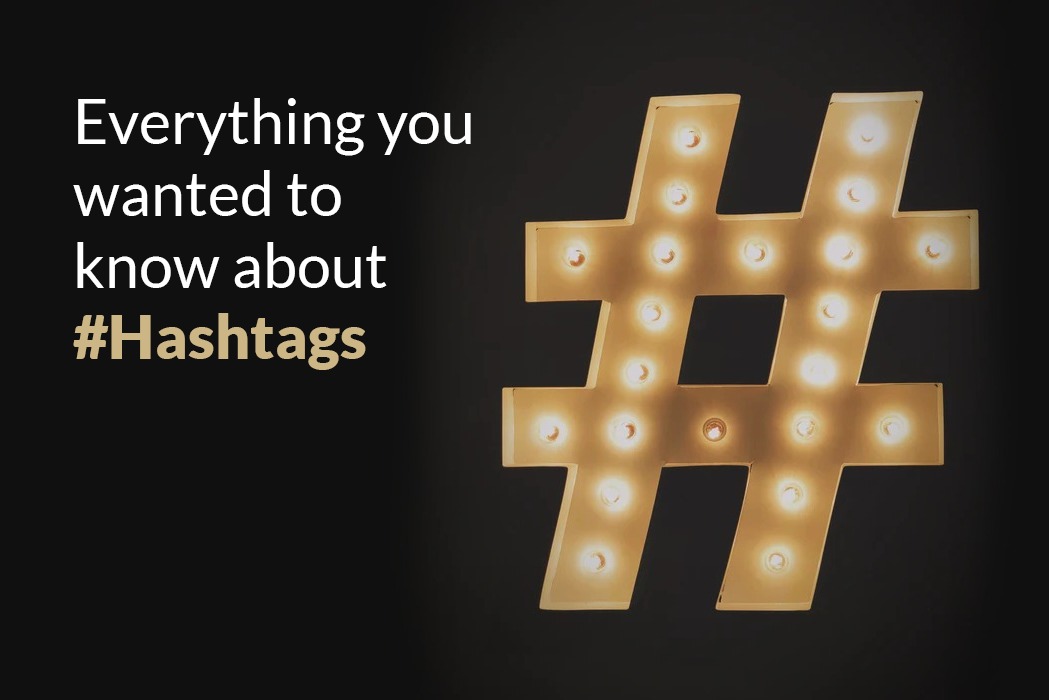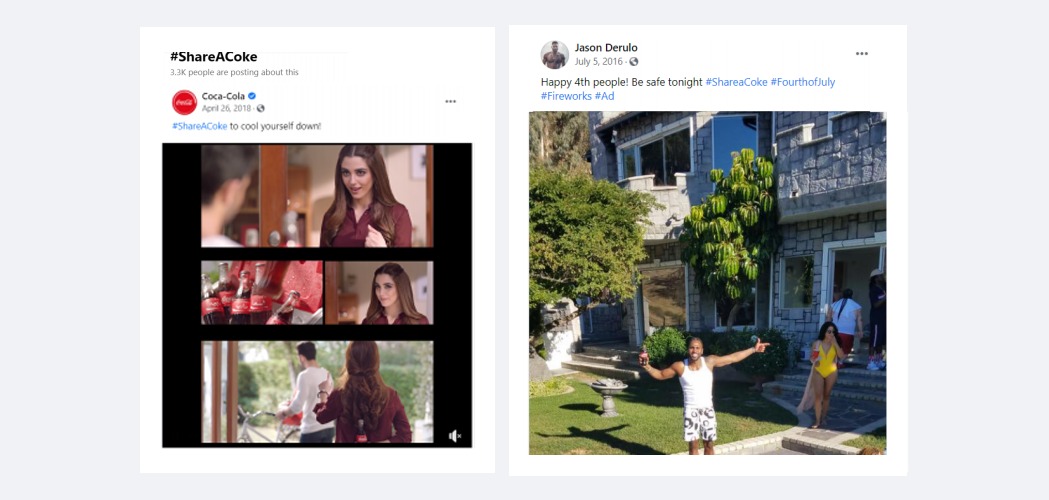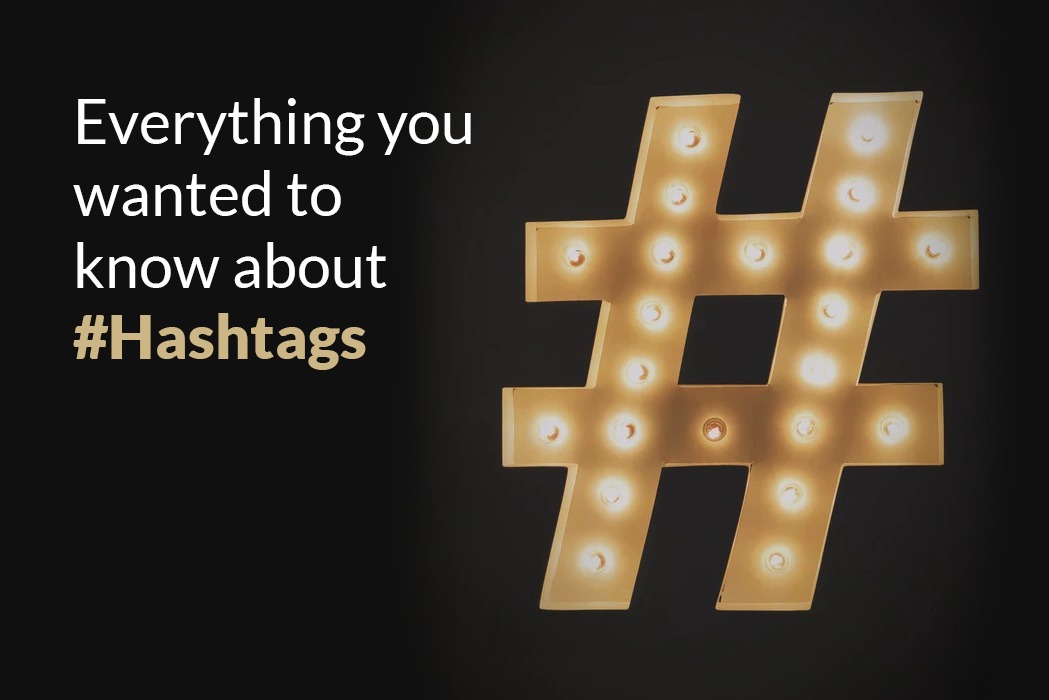
Log into any social media platform and you’re certain to see a hashtag almost immediately. Hashtags have come a long way since they were first popularized on Twitter(X) and today, most of us use them almost unconsciously. But the strategic use of social media marketing hashtags could actually be one of the most effective ways to increase your brand awareness and engagement for your business. It can help your audience find you among a sea of social media posts and could become a powerful brand asset. But for hashtags to work, there needs to be a carefully curated strategy behind them. Here are some proven hashtag strategies that can boost your social media marketing.
5 Key #Hashtags Strategies to Market Your Business on Social Media
Inside this Article
Toggle1. Develop branded hashtags
Unlike topical hashtags that will vary with each of your posts and will be used by many others, branded hashtags and campaign hashtags require a lot of thought and remain fairly consistent. Think of your branded hashtag as your digital calling card. It’s something that will be included in all your social media posts, that your audience will immediately associate with your brand and that they, in turn, will use when posting about your brand.
A brand or business hashtag could be something as straightforward as your brand name or tagline. It could also be the underlying philosophy of your brand. Either way, make sure you create hashtags that are memorable and unique. For example, Nike consistently uses #JustDoIt, their iconic tagline on most of their social media posts. Other users often use the same business hashtag while posting about Nike products, so this gives Nike a huge collection of user-generated content just by streamlining their use of the branded hashtag.
Closer home, ITech uses the same strategy in our posts, for instance, #iTechTeam is a branded hashtag, while #employeespotlight is used by other businesses as well.


2. Use trending topics to get a higher reach
Instagram’s Explore page is a coveted spot for most brands. Getting featured here means that your posts can reach an audience beyond your followers, helping you build awareness among new users. One of the ways to do this is by following the trending hashtags each day in your specific segment and including them in relevant posts.
There are a number of Instagram hashtag generators online that can display a full list of trending hashtags depending upon the trending topics you search for. Make sure, however, that you only select a few hashtags from these lists that Instagram hashtag generators provide. They need to be relevant to your brand and the post you intend to use them for. Going overboard on hashtags could potentially backfire and make your posts look cluttered. For instance, Instagram allows up to 30 hashtags to be included on a post but I would recommend never to exceed 5 hashtags on each post.
Related content you might like: 3 Powerful Ways to Build Your Brand Through LinkedIn Company Page
3. Use competitor hashtags to attract their followers
Finding the right hashtag strategy that will attract the most relevant users can be challenging. This is why one of the most effective approaches is to carefully analyze your competitor’s social media activity and then create hashtags based on their content.
Identify the top 3 brands in your segment and look at the hashtags they use most often in their posts. Chances are that your common target audience is following these hashtags and are therefore more likely to view your posts if you use them. This hashtag strategy can help you gain a higher reach, improve the visibility of your posts vis-a-vis your top competitors and potentially steal some of their followers.
4. Make use of niche hashtags
The one potential issue with popular hashtags could be just that – they’re popular. This means that you’re competing with hundreds of thousands of accounts when you use that hashtag. For a smaller brand, it can be difficult to stand out among the sea of social media posts, especially by large, established accounts.
A more effective way to use popular hashtags is to drill down to a smaller niche category. For example, #fitness might have over a million posts, while #womensfitness could be half of that. To narrow it down further, use your location in the hashtag, for example, #newyorkgym. This will not only significantly reduce competition and increase engagement but will also help you reach a very relevant set of users.
Related content: How to Use Social Media to Improve Your Website’s SEO Results
5. Use hashtags in your content
Hashtags don’t have to just be relegated to the bottom of your social media posts, they can be incorporated into your content. TIn the image I shared earlier in this article, that is exactly what is done. This is especially effective on platforms like LinkedIn where having a large set of hashtags can appear unprofessional.
To use hashtags in your content, just naturally weave it into your original sentences. For example, LinkedIn hashtags on a post might look something like this:
“From my experience, I’ve seen the following #digitalmarketingstrategies provide the highest returns for businesses…”
Hashtags in your content serve two purposes. One, LinkedIn hashtags immediately help your posts reach a wider base of users who follow these hashtags and are therefore more likely to follow you. Second, they can highlight the most important parts of your post by making it bold and changing the text to blue. While a user is scrolling through their feed, the emphasis on the ‘keyword’ hashtag in your post could encourage them to stop and read the rest of it.
Hashtag Strategies for Specific Platforms
Hashtags are undeniably great for boosting your reach on social media, but they need to be used thoughtfully. In fact, overusing hashtags can negatively affect your engagement. A study by SocialBakers revealed that posts with more than 10 hashtags have 68.2% less engagement. While marketers suggest using 1-3 hashtags as the sweet spot on most platforms, the best approach is to tailor your hashtag strategy for each platform to achieve the best results.
Here, we’ll go through platform-specific hashtag strategies, along with recommended posting frequencies and the best times to post on each social network. This way, you’ll be equipped to create a solid, customized marketing plan.
How to use hashtags for Facebook?
On Facebook, hashtags work best when used sparingly, with just 2-3 hashtags recommended for boosting your reach. Posting 3-5 times a week is ideal for staying visible without overwhelming your audience. Branded or industry-specific hashtags work wonders, particularly for cross-media promotion.
Additionally, Facebook Reels, which reach 150 countries, should also feature relevant hashtags. Location-specific and brand hashtags tend to drive better engagement here, so keep an eye on popular hashtags in your industry and integrate them when possible.
How to use hashtags for Instagram?
Instagram, on the other hand, has specific guidelines for hashtag use. While the platform allows up to 30 hashtags per post, the ideal number is 3-5. Using 1 hashtag can increase engagement by 12.6% compared to posts without hashtags, according to Fohr Insights.
Focus on quality over quantity by mixing popular hashtags with relevant niche ones. Stories, reels, and bio sections are great places to showcase these hashtags, and aim to post 2-5 times per week to keep your audience engaged. Additionally, Instagram hashtag generators can help identify the most effective tags.
How to use hashtags for Linkedin?
When it comes to LinkedIn, although the platform is more professional, hashtags still play a crucial role. However, they should be used in a formal and relevant context. Unlike Instagram, there is no hard limit for hashtags, but 3-5 hashtags are generally the best range for LinkedIn posts.
Aim to post 2-5 times per week for consistent engagement. Tracking competitors’ use of hashtags can be helpful, especially if you use LinkedIn’s feature that allows you to follow specific hashtags and monitor the posts associated with them.
How to use hashtags for Pinterest?
Pinterest is all about visual discovery, and hashtags are a valuable tool for improving the visibility of your pins. Pinterest hashtags work similarly to search engine keywords, helping rank your content in the search results. Use 2-6 hashtags in your pin descriptions for the best results.
Pinterest also offers an autocomplete feature that suggests popular hashtags based on pin counts. While you can add up to 20 hashtags, focusing on 6-15 pins a day will yield the best results. Incorporating keyword-based descriptions along with hashtags will help maximize your discoverability.
How to use hashtags for X?
On X(Twitter), hashtags are a core part of the platform’s identity, originally being created here. Tweets that use popular hashtags see double the engagement compared to those without. The key is to focus on 1-2 hashtags per tweet for the best reach.
According to Hubspot, businesses tweeting with hashtags are 33% more likely to receive retweets, making it a powerful tool for growing your audience. Conduct a Twitter hashtag search in the “Trends for You” section or use a generator to find the best-performing tags. Aim to post 5-20 tweets per day with relevant hashtags to stay visible in your audience’s feed.
How to use hashtags for Youtube?
Finally, hashtags on YouTube can significantly boost your SEO rankings. YouTube allows you to use hashtags in video descriptions, titles, and above the title. Although the platform permits up to 15 hashtags, 3-5 hashtags are ideal for optimizing content without overdoing it. YouTube’s algorithm takes these hashtags into account, improving video discoverability. Aiming for 1 video per week will show solid results if you use the right combination of hashtags.
Use it correctly
When used correctly, hashtags can be one of the best ways to boost your social media presence. Moving away from an ‘instinctive way of using social media marketing hashtags to a targeted hashtag strategy can help your audience find and engage with your content much more effectively.

Karen Jain
Karen brings her decades-long experience in content and digital marketing to helping global brands to showcase their expertise. When she isn’t writing or caught up in being a digital marketing evangelist, you will find her passionately involved in animal rescues.








